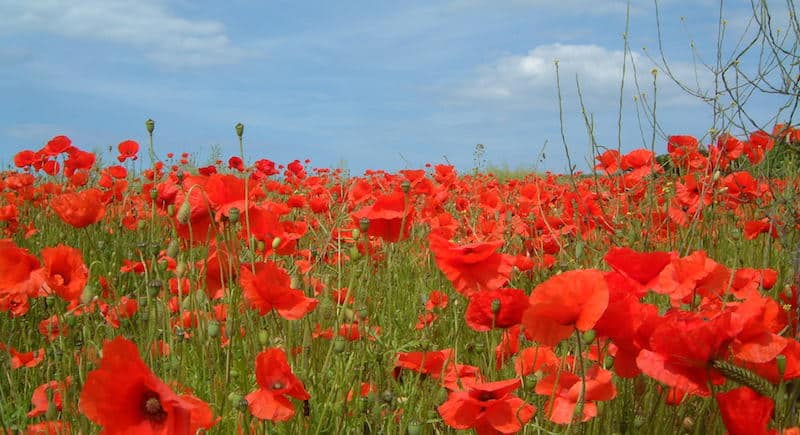Understanding the Symbolism of Poppies on ANZAC Day
Hey there, super parents! Are you looking to explain the importance of poppies on ANZAC Day to your little ones? You’ve come to the right place! This guide is packed with easy-to-understand information that will help you introduce this poignant symbol to your family. So, let’s begin our journey into history and remembrance, shall we?
What is ANZAC Day?
First things first, let’s chat about ANZAC Day. ANZAC stands for the Australian and New Zealand Army Corps, and the day marks the anniversary of the first major military action fought by Australian and New Zealand forces during the First World War. Specifically, ANZAC Day commemorates the landing at Gallipoli on the 25th of April, 1915. It’s a day to honor the courage, sacrifice, and camaraderie of those who have served and continue to serve their countries.
Why Poppies?
Now, onto the star of our story: the poppy! Poppies are vibrant red flowers that became synonymous with remembrance due to their resilience and the role they played in World War I. The battlefields of Western Europe, including Gallipoli, were often bleak and muddy. Yet, after the conflict, beautiful red poppies began to bloom among the devastation, signifying life, hope, and renewal amidst a landscape scarred by war.
The Inspiration Behind the Poppy
The concept of the remembrance poppy was inspired by the famous poem “In Flanders Fields,” written by Canadian military doctor Lieutenant Colonel John McCrae. His touching words captured the contrast between the poppies and the graves of fallen soldiers. The poem’s popularity led to the adoption of the poppy as a symbol for the blood spilled in war and the spirit of those who died for their countries.
How to Introduce Poppies to Children
Introducing the idea of remembrance and respect through the ANZAC poppy is a wonderful opportunity for educators and parents alike. Start by reading age-appropriate stories or watching short documentaries about ANZAC Day. Let your children ask questions and express their thoughts and feelings. Why not get creative and craft paper poppies together? As you do, share the story of the poppies and what they stand for.
ANZAC Poppy Traditions
On ANZAC Day, it’s common to see people wearing poppy pins or laying wreaths adorned with poppies at memorials. This act of remembrance is a way for everyone, young and old, to pay tribute to the ANZACs’ bravery and to keep their memories alive. Including poppies in ANZAC Day ceremonies helps children visually understand the concept of commemoration. It’s a simple yet powerful gesture that links the past to the present.
Wearing the Poppy
The tradition of wearing a poppy is a personal and profound act. Explain to your children how this small symbol can show a big amount of respect. It doesn’t just honor those who fought in the Gallipoli campaign, but all service members who have served in past and current conflicts.
As we delve further into the endearing tale of the ANZAC poppies, remember to personalize the experience for your family. Let’s nurture a sense of gratitude and ensure that the stories of bravery and resilience continue to inspire us all.
There’s so much more to explore, so don’t let the story end here. Get set to journey deeper into the history, tradition, and activities that can help make ANZAC Day a meaningful experience for your family. Stay tuned for the continuation of this guide, where we’ll talk about activities, ceremonies, and how you can actively participate in commemorating this important day with poppies and pride.

5 Things Parents Should Know in Preparing for ANZAC Day with Poppies
Exploring the significance of poppies on ANZAC Day is a heartfelt tradition and an enriching history lesson for your family. Before delving into this solemn day of remembrance with your children, here are five useful things to keep in mind:
1. Learn About the History Together
Preparing for ANZAC Day can be a bonding experience. Spend time together learning about the history of the ANZAC forces and the Gallipoli campaign. Use interactive resources like children’s books, educational websites, and videos that are tailor-made for young minds to grasp the historical context of the day.
2. Crafting Poppies as an Educational Activity
Crafting paper poppies is a hands-on activity that allows you to discuss the significance of the poppy while engaging in a fun and creative process. You can use this activity to talk about the symbol of remembrance poppies represent, and how they came to be associated with military sacrifice and remembrance.
3. Attend Local ANZAC Ceremonies or Events
Check out local ANZAC Day ceremonies or events where your family can participate. This real-life experience can offer a deep sense of community and belonging, and witnessing the traditions first-hand can make the memory more vivid and meaningful for children.
4. Encourage Questions and Open Conversation
Children are naturally curious, so encourage them to ask questions. Be open to discussing the themes of war, peace, bravery, and sacrifice in an age-appropriate manner. Open conversations will help them make personal connections with the stories behind ANZAC Day.
5. Reflect and Personalize the Day
ANZAC Day isn’t just about remembering history; it’s also about personal reflection. Share with your children any family military history or stories that you may have. Encourage them to think of qualities such as bravery and mateship that the ANZACs exemplified and how they can apply these values in their own lives.
Activities and Participation on ANZAC Day
To truly commemorate ANZAC Day with your family, consider participating in activities and ceremonies that pay tribute to the sacrifices made by service members from Australia and New Zealand. Here are some suggestions:
- Attend a dawn service in your local community or watch a live broadcast of the national ceremony.
- Visit war memorials or museums that have ANZAC Day exhibits or events.
- Bake ANZAC biscuits together, a delicious way to bring tradition into your home.
- Read “In Flanders Fields” and other poems or stories about the ANZACs with your children.
- Participate in a moment of silence at home or wherever you are on ANZAC Day.
- Teach your children the significance of the Ode of Remembrance and discuss its meaning.
- Connect with veterans or service personnel, and encourage your children to write thank you cards to them.
By wearing poppies and participating in these acts of remembrance, we can honor the past and educate our children about the importance of service, sacrifice, and the cost of peace.
For more great fun click here. For more information see here
Disclaimer
The articles available via our website provide general information only and we strongly urge readers to exercise caution and conduct their own thorough research and fact-checking. The information presented should not be taken as absolute truth, and, to the maximum extent permitted by law, we will not be held liable for any inaccuracies or errors in the content. It is essential for individuals to independently verify and validate the information before making any decisions or taking any actions based on the articles.




